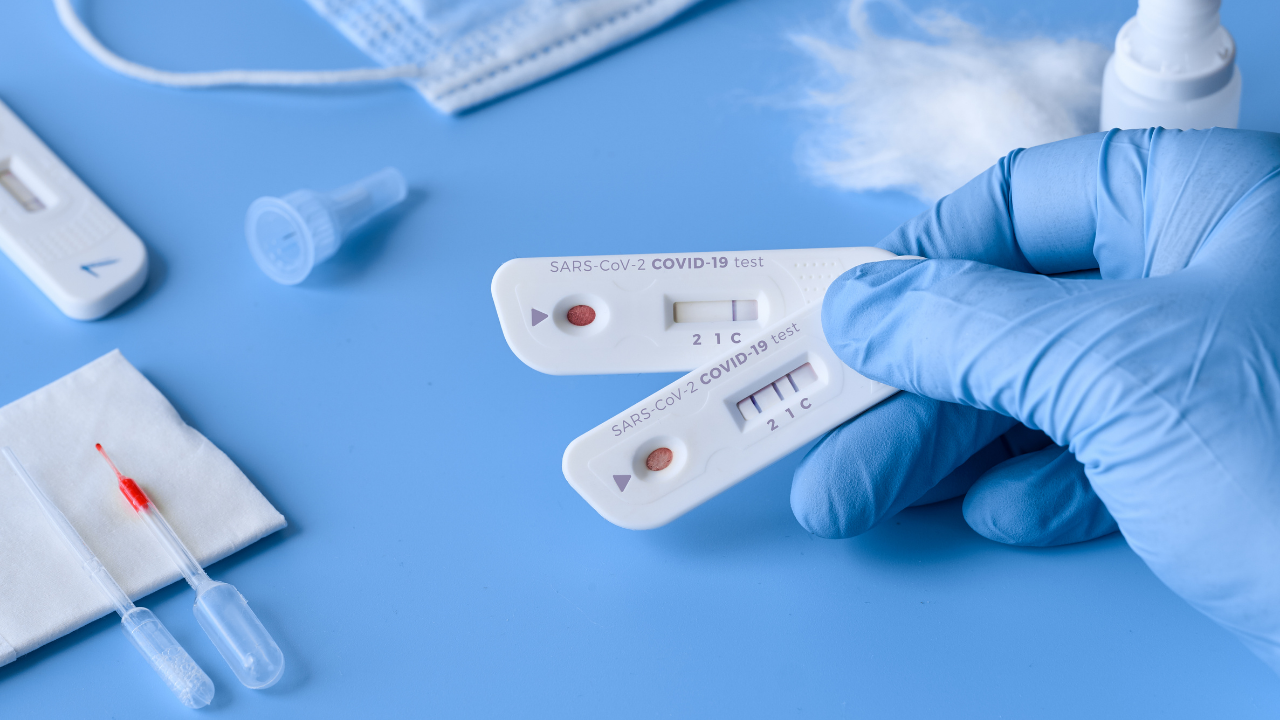
COVID-19 test kits (NQUIRER.net file photo)
The daily COVID-19 case count returned to the upward figures of early this year, reaching a five-month high on Thursday, according to latest data from the Department of Health (DOH).
The coronavirus tracker of the DOH showed new infections at 2,371, the highest since Feb. 16 when the country logged 2,671 cases.
It was the second time this week that daily infections breached the 2,000 mark, bringing the total number of active cases to 16,244.
Cases in the National Capital Region (NCR) continued to rise, but the pace slowed down the past week. From July 8 to July 14, average daily cases in Metro Manila grew by 29 percent to 748—lower than the 42 percent growth the previous week, which led to 582 cases in that period.
OCTA Research fellow Guido David said on Thursday that infections may “peak” soon in the capital region.
But it may also be delayed, he said, if cases continue to rise as reflected in the increasing positivity rate, or the percentage of tests results that are positive.
A peak is indicated when the pace of transmission has slowed down or is already on a downtrend.
The Calabarzon (Cavite, Laguna, Batangas, Rizal and Quezon) region had the highest positivity rate at 14.4 percent, followed by NCR at 13 percent, Western Visayas at 11.7 percent and Central Luzon at 11.5 percent.
The positivity rate nationwide was at 10.6 percent, about twice the threshold set by the World Health Organization (WHO) of below 5 percent to indicate that COVID-19 transmission in a given area is under control.
Only variant of concern
Bicol, Eastern Visayas, Zamboanga Peninsula, Davao, Soccsksargen, Caraga and Bangsamoro were the regions whose positivity rates were well within the WHO’s benchmark.
According to Dr. Marissa Alejandria, director of the Institute of Clinical Epidemiology at the University of the Philippines (UP) Manila, Omicron has been the only COVID-19 variant of concern in circulation globally.
“Other variants have been demoted to variants being monitored,” she said at an online forum on Friday titled “Dumadami ang Kaso: Sino ang Nagkaka-Severe COVID Ngayon?” (Cases on the Rise: Who’s Getting Severe COVID Now?)
Alejandria noted that BA.5 and BA.2.12.1 were the Omicron subvariants driving the spike in cases in the country, and that it was compounded by increased mobility, decreased compliance with public health standards and waning immunity.
Booster vaccination nationwide remained slow, with only 15.5 million receiving their first and 993,434 getting their second booster doses.
‘Half-built’ wall
DOH data as of Wednesday showed that 71 million of the revised government target of 78.1 million have been fully inoculated with the primary doses.
The agency said the original 70-percent target was adjusted in line with this year’s population of 111.6 million, as estimated by the Philippine Statistics Authority.
Epidemiologist John Wong, another resource speaker at the forum organized by UP Manila, pointed out that only those who had been vaccinated and boosted in the last six months “have sufficient protection” against COVID-19.
Up to local gov’ts
“Our wall is only half-built and there are parts of the wall where the virus can come through easily. We need to build this up,” said Wong, a member of the technical working group on data analytics of the Inter-Agency Task Force for the Management of Emerging Infectious Diseases.
Meanwhile, the Department of Trade and Industry said it is up to the local governments and business owners to impose a policy barring the entry of people who have not yet taken booster shots.
Marinduque Gov. Presbitero Velasco Jr., who is also president of League of Provinces of the Philippines, earlier proposed a “no booster shot, no entry” policy, noting the rise in cases.
Infectious disease expert Dr. Rontgene Solante also said the government should consider making booster doses mandatory.
But at Friday’s Laging Handa briefing, Trade Undersecretary Ruth Castelo said this would be “their (local governments’) prerogative and also the prerogative of business establishments, to prevent entry of a customer who is not vaccinated or not boosted in this case.” —WITH A REPORT FROM NESTOR A. CORRALES